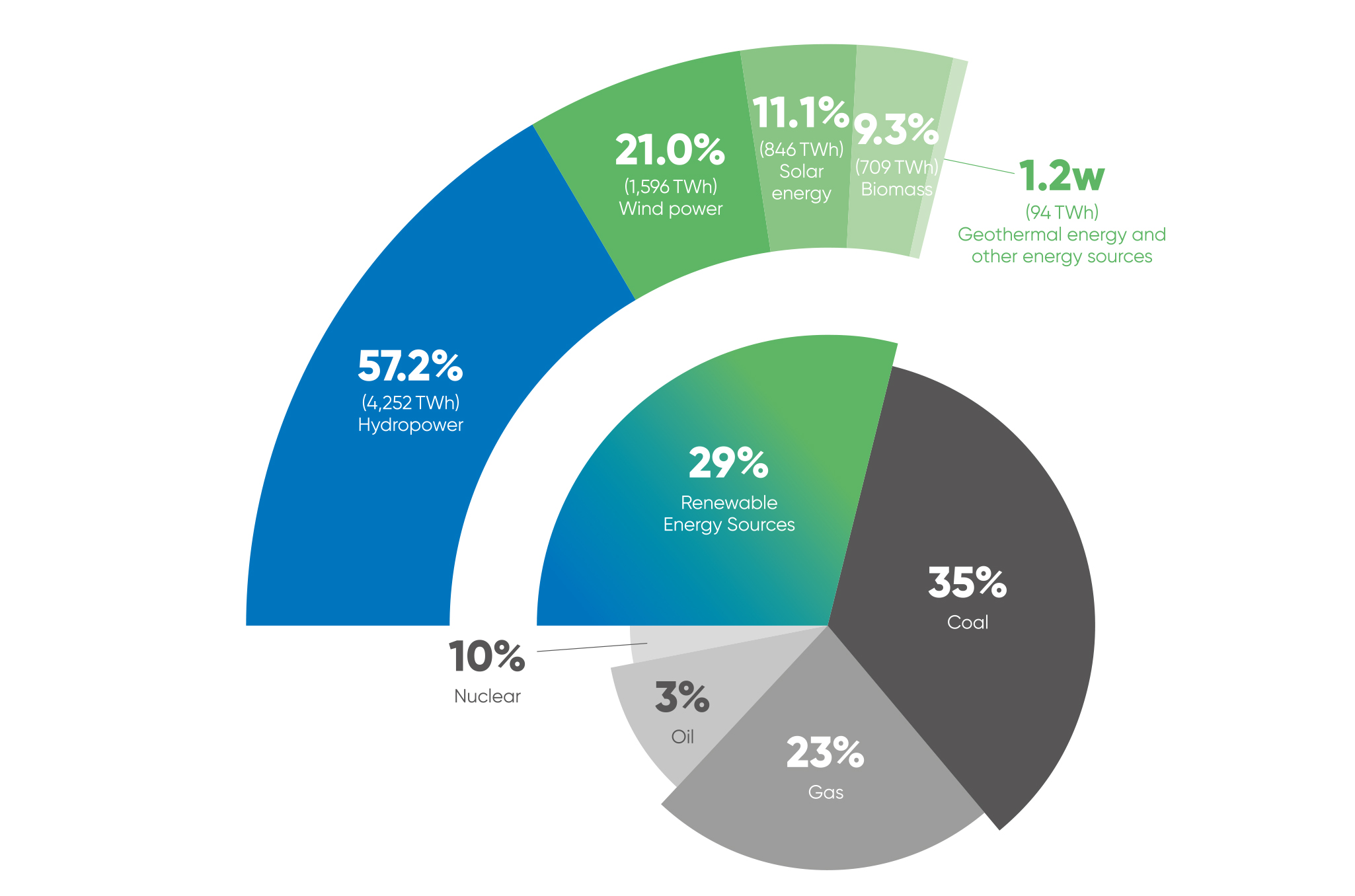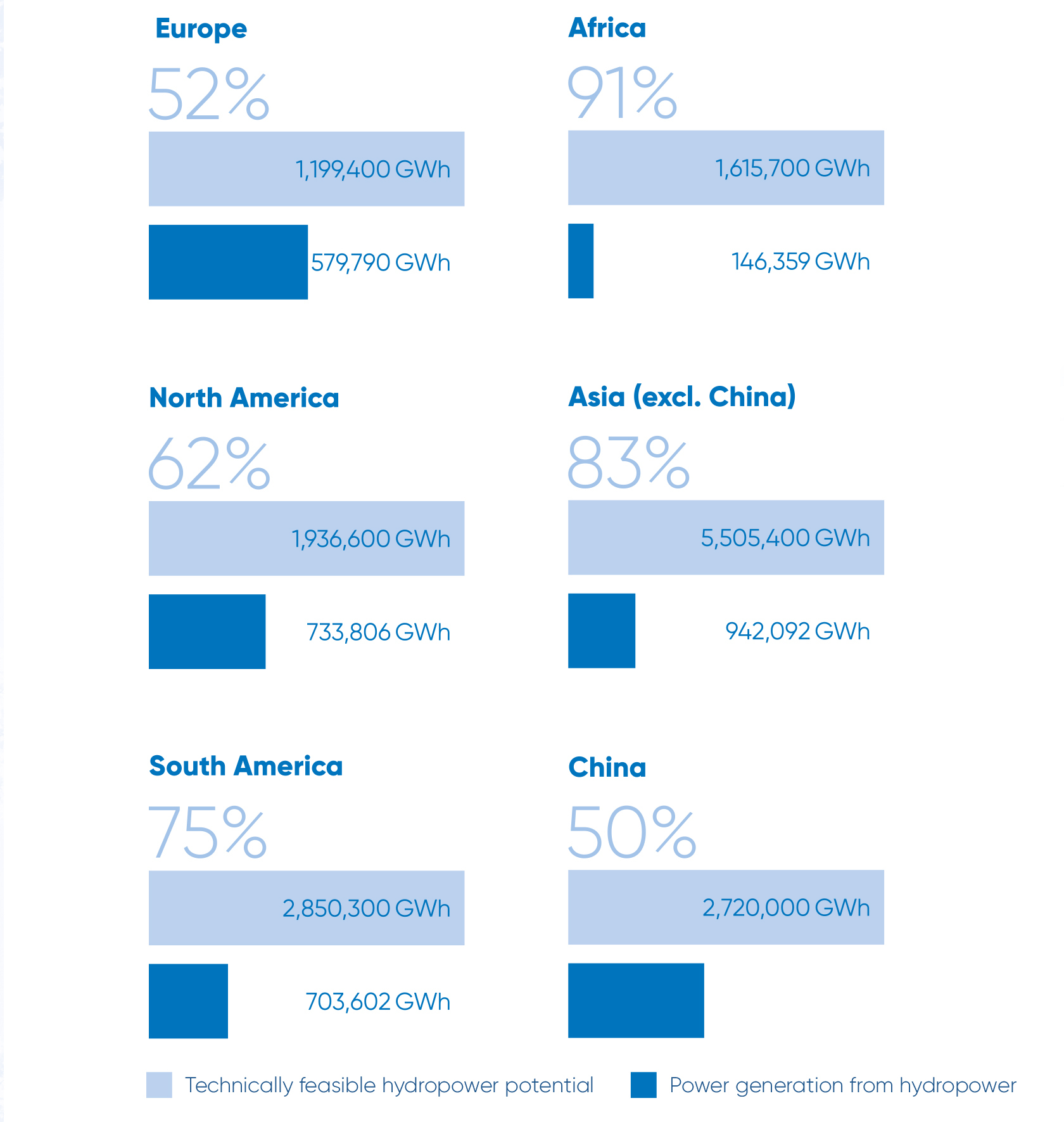To boldly go where no one has gone before - Wehr, Germany
Megatrends and Hydropower
Shaping the future
Megatrends develop slowly, but they are enormously powerful.

As gross global changes that affect every aspect of the economy and society, megatrends exert a profound influence on companies, institutions, and individuals. They form the basis for the evolution of entire economic sectors and are often the starting point for far-reaching strategies across governments, companies, organizations and other stakeholders. Megatrends are interwoven too. Globalization and urbanization both have a direct impact on our environment, mobility, and connectivity, for example. They all are part of a big, interconnected whole.
Global megatrends shape not only our present, but our future too. Today, numerous global research and development projects are focused on megatrends. To face the challenges of a changing world, new concepts, innovative ideas, and alternative approaches are needed, especially in how we source, deliver, and use energy.
We live in a dynamic world and even recent events like the global pandemic and the on-going war in Europe have already had a significant impact on the development of megatrends. Some megatrends are becoming more prominent, whereas others are taking a back seat or even merging with others. We have to continually rethink how our world works and reimagine both our preferred path and our final destination. It is vital that as a society we reach a new understanding of how communities can come together to find new ways of working and new ways to localize the workforce. We must do this without losing sight of the wider globalization trend and the ultimate goal of accelerating the development of clean energy for a green, sustainable, safe and affordable future.
Percentage distribution of worldwide power generation

Source: IEA World Energy Outlook 2021
Demographic and economic shifts
Demographic and economic shifts are essential and continuously evolving worldwide megatrends. War in Europe and the pandemic have both led to a serious supply chain disruption, for instance. Globalization itself is on a kind of test bench. It is necessary to rebuild local supply chains to overcome and protect businesses from supply shortages and become independent from single source suppliers. Innovative strategies are needed to alleviate global supply chain risks while securing continued cross-border collaboration.
Every minute the world’s total population increases by some 150 people overall and yet there are drastic regional differences in demographic development. In industrialized nations, populations are typically shrinking, and the majority of the people will soon be over 65 years old. Meanwhile, the population of Asian and African nations is growing. This is resulting in a political and economic shift, increasing the economic power of these developing countries and their emerging markets. These changes are also having a major impact on current and future energy use in these developing regions.
Digitalization and connectivity
Megatrends like Digitalization and Connectivity, together with automation are becoming ever more important as we advance into the digital future. Networking and communication technologies are fundamentally changing the way we live, work, and do business. The digital transformation also has social and cultural impacts. Digitalization should not only be equated with technology but should also be more fundamentally understood. Transparent data governance, practiced data ethics, and ensuring cybersecurity are essential for success in the modern world. The digital transformation will play an increasingly important role in all areas of our life, resulting in a new awareness of the digital opportunities and a more reflective use of digital devices and technologies.
Climate crisis
Europe’s energy security crisis and the global Climate crisis are the most important energy concerns globally. Energy security, sustainability, and affordability – not only in Europe but worldwide – are currently the prime focus of the global energy industry and the world’s decision makers.
Following the 2021 United Nations Climate Change Conference (COP26), the IEA restated the need for urgent action. If we do not significantly accelerate the deployment of clean, sustainable energy, the climate goals of the Paris Agreement cannot be met.
Urbanization
With an increasing global population, urbanization and the associated growth in energy demand, it is clear that conventional fossil-based energy sources will reach their limits of deployment in the very near future. Alternatives are urgently needed. Although approximately 27% of the world’s demand for electricity is currently satisfied through renewable resources, much more growth in renewable energy capacity, including HYDROPOWER, is compulsory over the coming years if catastrophic climate change is to be avoided.
Research and development of other zero-carbon energy concepts, such as green hydrogen, is also in full swing. Integrated solutions that optimally combine various renewable technologies are emerging and will be in even greater demand in the future. Environmental awareness and sustainability are central economic factors that already influence investment decisions across all businesses and industries.
The importance of hydropower
Even as renewable resources like wind, biomass, solar, and geothermal energy exhibit extraordinarily rapid growth, hydropower still represents by far the largest renewable energy source with a 57% share of total production. And, although the technically feasible potential of hydropower is an almost unbelievable 16,000 TWh per year, not even one third of this potential has been exploited to date. Around the world, strategies are underway to develop this tremendous clean energy potential by building new hydropower plants, as well as modernizing and upgrading existing ones.
According to the 2022 Hydropower Status Report from the International Hydropower Association (IHA), some 26 GW of new hydropower capacity thereof 4.7 GW of pumped storage was put into operation in 2021. This is up on the 2020 installation figures of 21 GW and 1.5 GW, respectively. With these increases the total installed hydropower capacity (including pumped storage) reached 1,360 GW and hydropower produced an impressive 4,252 TWh over the year. But despite this positive progress, new installations remain short of the 30 GW a year needed to stay on track to limit the global temperature rise to 2 °C, and far below the roughly 45 GW needed for the more ambitious net zero 1.5 °C target.
Worldwide Hydropower potential per region

Sources: World Bank, Zukunftsinstitut, PRB Population Reference Bureau, pwc, IEA, REN-21, IRENA, IHA, Hydropower & Dams World Atlas 2021
In regions where energy demand will increase dramatically over the next few years — such as in Asia, South America, and Africa — new large plants and a multitude of small hydropower projects will be implemented. There is also a huge potential for additional hydropower generation in Europe and North America where around half the facilities are older than 40 years. Modernization and uprating can ensure hydro makes an even more significant contribution to sustainable power in the future. Alongside its environmentally friendly generation characteristics, pumped storage offers benefits like providing further flexibility and cost-effective bulk storage, making it an invaluable asset for the clean energy transition by enabling other kinds of renewables like wind and solar.
The IHA has also undertaken a new analysis of its global hydropower database, which shows that there are at least 500 GW of projects in the pipeline for future hydropower capacity. However, of these only 156 GW is actually under construction with 165 GW approved by regulators but awaiting construction, 138 GW pending approval and 89 GW only announced. Moving these projects into construction is crucial if we are to cost effectively tackle the climate crisis.
With 180 years of innovation, ANDRITZ has long been at the forefront of technical development, responding to megatrends with pioneering technologies and concepts and leading the transition to new and better approaches in order to meet the changing needs of society. That philosophy holds as true today as it did when the company was first founded. Faced with the profound impacts of global megatrends, hydropower and ANDRITZ innovation will be a long-term megatrend too.



